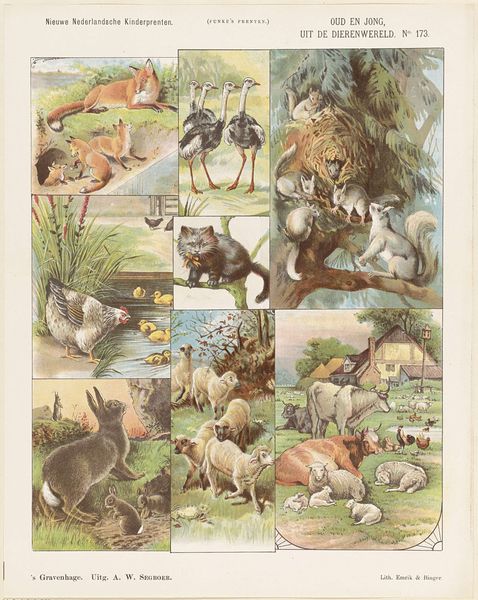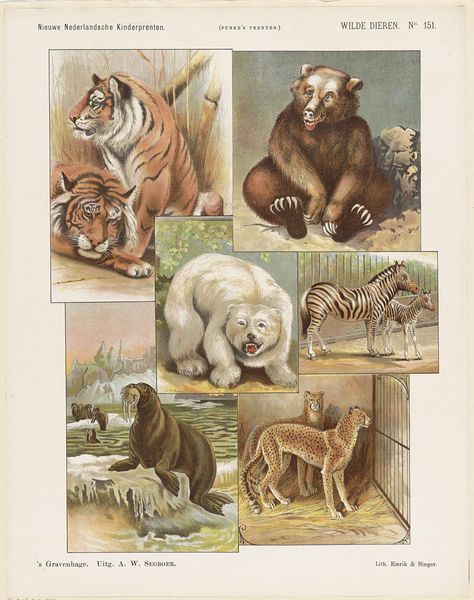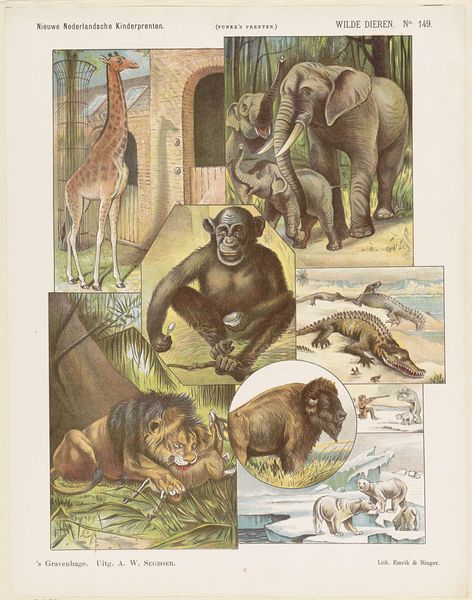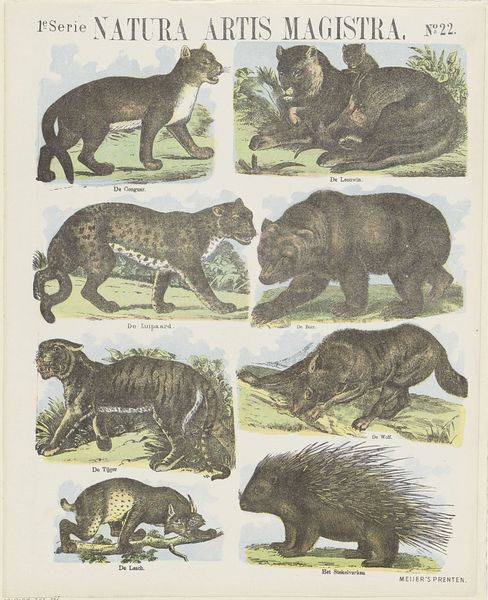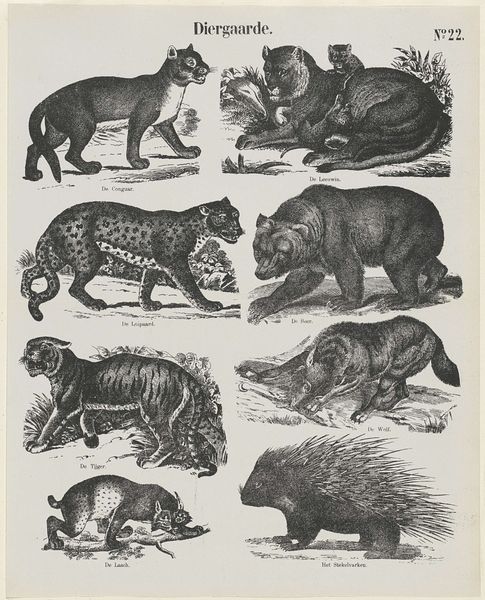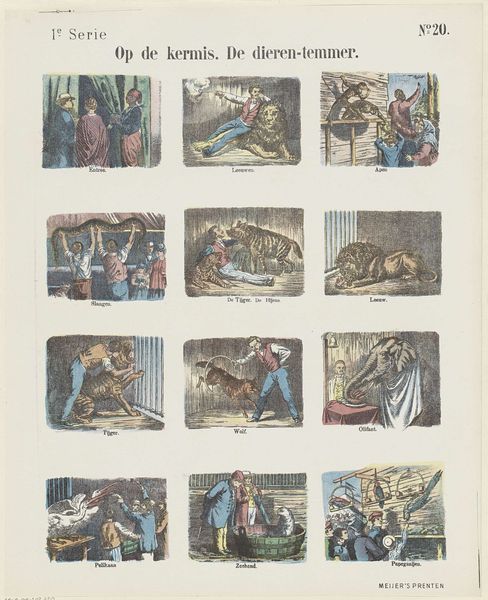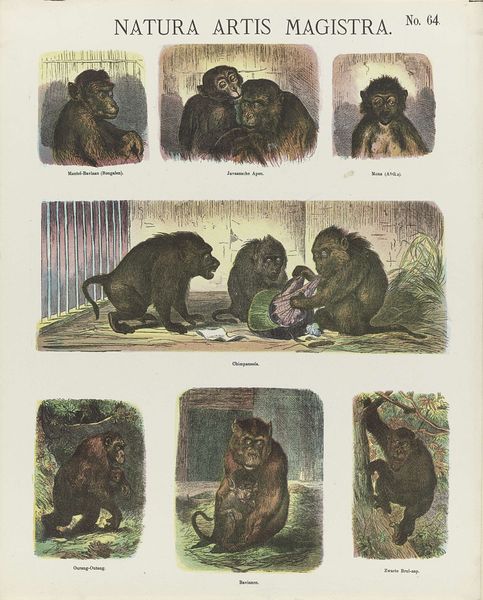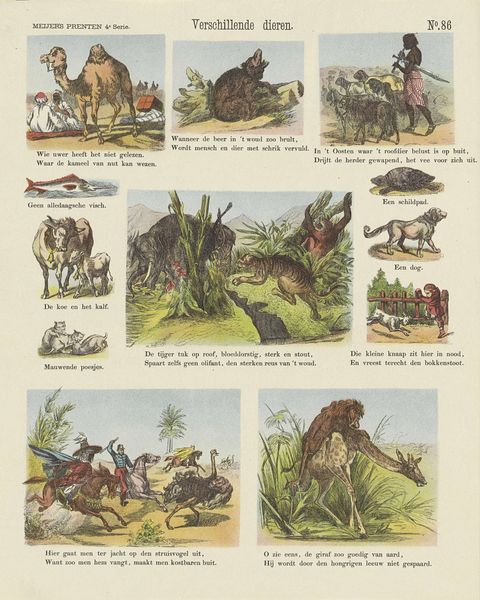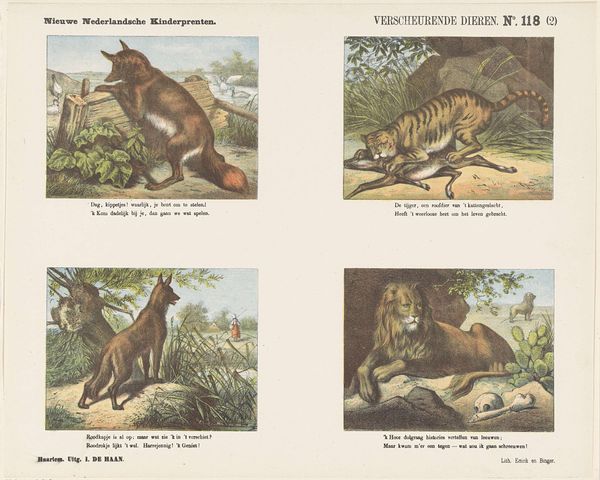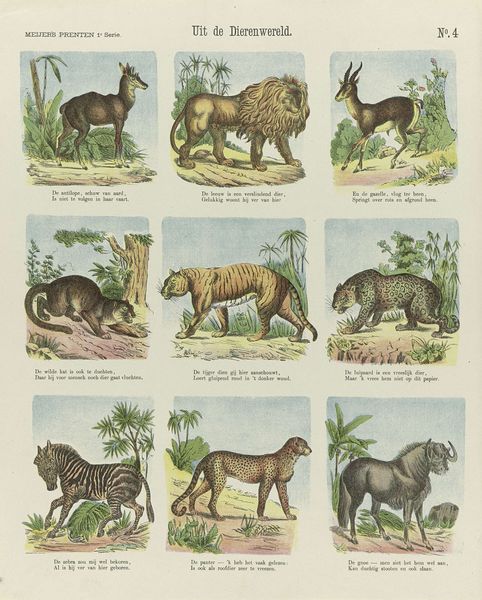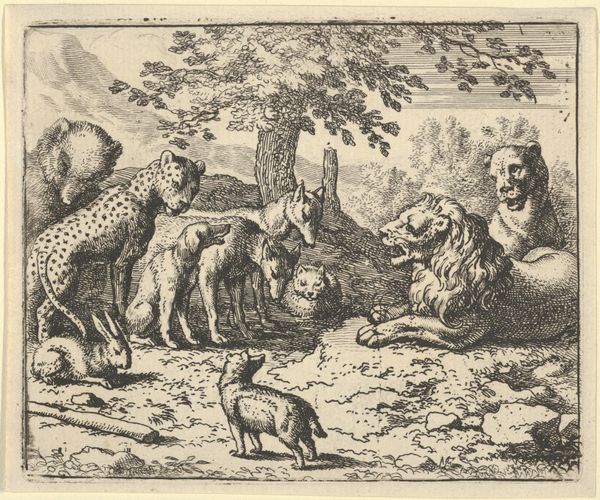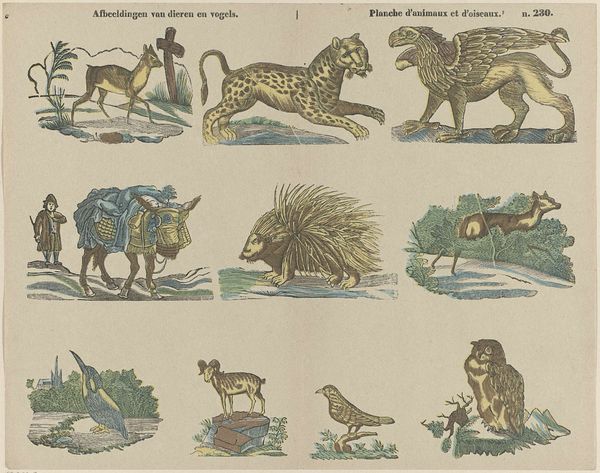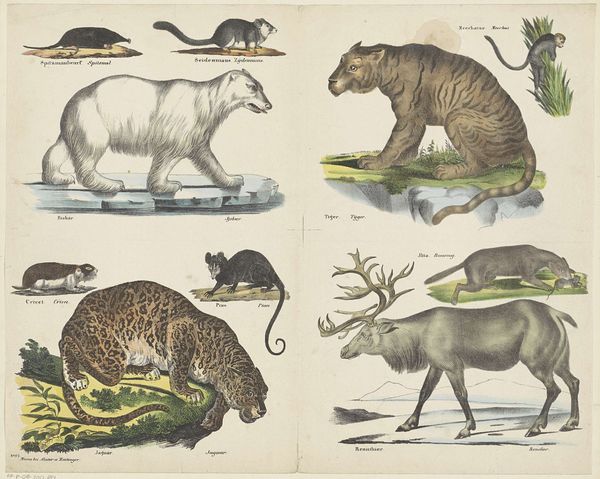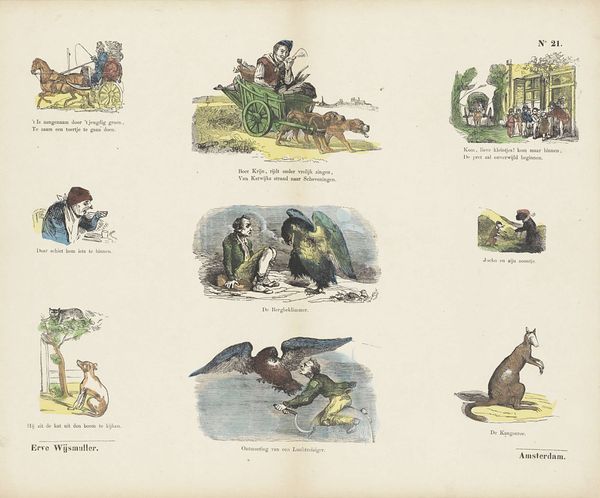
Dimensions: height 443 mm, width 350 mm
Copyright: Rijks Museum: Open Domain
Editor: This is "Het leven van den leeuw," or "The Life of the Lion," a lithograph print by H. Leutemann from 1860. The illustrations showing various stages of lions, ranging from cubs to lions hunting, are quite fascinating, almost like a natural history study. How do you interpret this work? Curator: Thank you for sharing your observations on this lithograph. What strikes me immediately is the cultural context in which this piece was created. Here we have a European artist depicting the 'life' of a lion, likely without firsthand experience. How do you think colonial narratives shape how nature, and specifically animals like the lion, were represented in art during the 19th century? Editor: That's a great question. It seems like the lion is presented as both majestic and a resource, fitting into a colonial idea of dominance over the natural world, wouldn't you agree? Curator: Absolutely! It embodies the romanticized and often distorted view that was projected onto the African continent and its inhabitants, both human and animal. And I wonder, to what extent this representation contributed to justifying colonial expansion and exploitation, by portraying the lion as something to be tamed or controlled? What kind of power structures do you think emerge when nature becomes a spectacle for the colonizer's gaze? Editor: I hadn't considered that. Now it appears less like an innocent study of nature and more like a symbol of power and control. It makes you think about how art can reinforce problematic ideologies. Curator: Exactly! This piece prompts us to consider art's role in shaping perceptions of the ‘Other’ and reinforcing colonial power dynamics. I’m glad we had a chance to unpack it. Editor: Me too, thank you for enlightening me with this point of view!
Comments
No comments
Be the first to comment and join the conversation on the ultimate creative platform.
